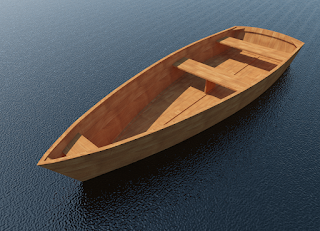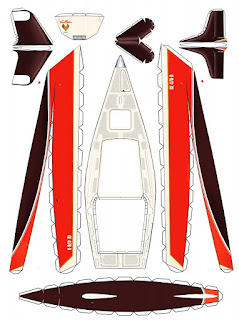Easy Rowing Boat Plans for First-Time DIY Enthusiasts
Easy Rowing Boat Plans for First-Time DIY Enthusiasts
So, you've got the itch to build something with your own two hands, and a peaceful glide across the water sounds pretty idyllic, right? Building your own rowing boat might seem daunting, but trust me, it's way more achievable than you think, especially if you choose the right plans. This guide is for folks just starting out – no prior boat-building experience necessary! We'll break down everything into easy-to-follow steps, focusing on simplicity and practicality.
Choosing Your Boat Design: Keeping it Simple
The key to a successful first-time build is choosing a simple design. Forget about elaborate, curvy hulls – we're going for straightforward, easy-to-construct options. A few good choices for beginners include:
- Simple flat-bottomed rowboat: These are incredibly stable, making them perfect for learning to row and for calm waters. They're also the easiest to build.
- Small punt: Similar to a flat-bottomed rowboat but often slightly wider and flatter, offering even more stability. Think of a mini-raft with a more defined shape.
- Small canoes (simple designs): Some canoe designs are surprisingly straightforward to build, especially those utilizing simple plywood construction techniques. Look for plans specifically marketed towards beginners.
Avoid designs with complex curves or intricate joinery until you've got some experience under your belt. There are plenty of free and low-cost plans available online – just search for "simple plywood rowboat plans" or "beginner canoe plans". Remember to carefully review the plans before you start to ensure you understand every step.
Gathering Your Materials: What You'll Need
The materials list will vary slightly depending on your chosen boat design, but generally, you'll need:
Wood:
- Plywood: Marine-grade plywood is best as it's resistant to rot and water damage. The thickness will depend on your boat's size and design (typically between ½" and ¾").
- Wood strips (optional): Some designs use wood strips for added strength and aesthetic appeal. Cedar or mahogany are popular choices.
- Wooden battens (optional): These are thin strips of wood used for reinforcing seams and adding structural support.
Fasteners & Adhesives:
- Marine-grade epoxy resin and hardener: This is essential for strong, waterproof joints.
- Screws: Use stainless steel screws to prevent rust. Choose the appropriate size and length for your plywood thickness.
- Wood glue: A good quality exterior wood glue will provide additional bonding strength.
Other Essentials:
- Measuring tapes and squares: Accuracy is crucial in boat building!
- Jigsaw or circular saw: For cutting the plywood to size. A jigsaw is often preferred for curved cuts.
- Drill with various drill bits: For pilot holes and screw insertion.
- Clamps: Many clamps of varying sizes will be necessary to hold pieces together while the glue and epoxy cure.
- Sandpaper: For smoothing surfaces and edges.
- Paint or varnish: To protect your boat from the elements. Marine-grade paint is highly recommended.
- Oars or paddles: You'll need something to propel your beautiful creation!
Step-by-Step Construction: A General Guide
The specific steps will depend on your chosen plans, but here's a general outline of the process:
- Prepare the plywood: Cut the plywood pieces according to your plans. Make sure your cuts are accurate and clean.
- Assemble the hull: This is where the plans become crucial. Follow the instructions carefully, using epoxy and screws to join the pieces together. Clamps are your best friend here – use plenty!
- Reinforce the joints: Once the epoxy has cured, you might need to add additional reinforcement, such as wood battens or strips, to critical areas.
- Sand and finish: Once the hull is assembled, sand down any rough edges and imperfections. Apply several coats of marine-grade paint or varnish for protection.
- Add any final details: This could include things like seats, oarlocks, and any other features specified in your plans.
Remember to take your time and be meticulous. Accuracy is essential for a sturdy and seaworthy boat. Don't rush the process – a well-built boat will last for years!
Safety First!
Working with power tools requires caution. Always wear safety glasses and appropriate hearing protection. Make sure your workspace is well-lit and organized. If you're unsure about any step, consult the plans or seek advice from someone experienced in woodworking or boat building.
Testing Your Boat: The Grand Finale!
Once your boat is finished, it's time for the exciting part: the maiden voyage! Start in calm waters and gradually test your boat's stability and handling. Take a friend or family member along for safety. Enjoy the fruits of your labor and the serene feeling of gliding across the water in your handmade rowing boat!
Commonly Asked Questions
Q: What's the best type of wood to use?
A: Marine-grade plywood is the best choice for its water resistance. For added strength and aesthetics, you can use cedar or mahogany strips.
Q: How long will it take to build a simple rowboat?
A: This depends on the complexity of the design and your experience level. A simple design could take a few weekends, while more complex designs might take several weeks.
Q: Do I need any special tools?
A: A jigsaw, drill, clamps, and measuring tools are essential. A circular saw can also be helpful.
Q: Where can I find plans?
A: Many free and paid plans are available online. Search for "simple plywood rowboat plans" or "beginner canoe plans". Check out sites like Duckworks and other boat-building forums.
Q: What if I make a mistake?
A: Don't worry! Everyone makes mistakes. With wood, you can often correct minor errors with careful sanding and repair. For larger mistakes, you might need to start over on that particular section. Learn from your mistakes and keep going!
Building your own rowing boat is a rewarding experience. It's a chance to learn new skills, create something beautiful and functional, and enjoy the peacefulness of being on the water. So grab those plans, gather your materials, and get started! Happy building!



